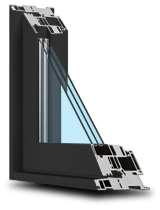Vinyl Windows vs Fibreglass Windows: A Comprehensive Comparison
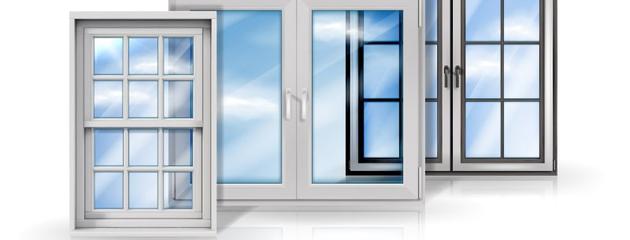
Key Takeaways
- Material matters: Fibreglass is stronger, more durable, and more thermally stable, while vinyl is more affordable and easier to install.
- Energy efficiency: Both can be ENERGY STAR®-rated, but fibreglass offers superior insulation and stability in Canada’s extreme temperatures.
- Maintenance & lifespan: Vinyl is nearly maintenance-free but has a shorter lifespan; fibreglass requires occasional care yet can last 50+ years.
- Cost & ROI: Vinyl is budget-friendly upfront; fibreglass has a higher initial cost but boosts long-term home value.
- Aesthetics: Fibreglass frames are thinner and sleeker; vinyl has a more classic profile with visible seams.
Vinyl vs Fibreglass Windows
Are vinyl windows truly a greener and more cost-effective choice for your home than fibreglass windows?
This question challenges the common belief that fibreglass windows are the more eco-friendly and economical option. Dive into this article to uncover the answer, and to re-evaluate your assumptions about these two popular window materials .
| Feature | Fibreglass Windows | Vinyl Windows |
|---|---|---|
| Material | Glass fibres + resin (often recycled content) | Polyvinyl chloride (PVC) |
| Energy Efficiency | Excellent insulation (low thermal expansion) | Good insulation |
| Durability | 50+ year lifespan, highly impact-resistant | 25–30 year lifespan, can warp or crack |
| Maintenance | Low (can be repainted) | Very low (no painting or staining) |
| Aesthetics | Sleek, thin frames, paintable | Wider frames, visible seams |
| Cost | Higher upfront investment | More budget-friendly |
| Installation | Requires skilled labour | More straightforward installation process, often completed more quickly by professionals |
| Eco-Impact | Recyclable, longer lifecycle | Made from PVC, which has a higher environmental footprint compared to fibreglass |
| Availability | Less common, custom-ordered | Widely available, many styles |
What Are Vinyl Windows?
Vinyl windows feature frames made of PVC (polyvinyl chloride), a durable and widely used material in modern window manufacturing. They are known for their low cost, low maintenance, and good thermal performance.
Advantages of Vinyl Windows
- Affordable upfront cost: Ideal for budget-conscious projects and rental properties.
- Low maintenance: No painting or staining is needed; only occasional cleaning is required.
- Energy-efficient: Multi-chambered frames provide sound insulation.
- Easy installation: Lightweight frames are easier to handle and fit.
- Variety & availability: Readily available in many styles, colours, and sizes.
Disadvantages of Vinyl Windows
- Thermal expansion: Vinyl frames may slightly expand or contract in extreme temperatures, but modern multi-chamber designs and proper installation help minimize this effect.
- Visible seams: Some vinyl frames may exhibit subtle join lines at the corners, although newer manufacturing techniques have reduced their visibility.
- Lifespan: Typically lasts 20–30 years, providing reliable performance for most Canadian homes, especially when proper care and maintenance are provided.
- Environmental impact: Although PVC production raises ecological concerns, many manufacturers are implementing improvements in their processes and recycling practices to mitigate their effects.
Helen Sin, Consumer Success Manager at Canadian Choice Windows & Doors :
“Vinyl windows remain one of the best choices for Canadian homeowners — they combine excellent energy efficiency, durability, and minimal maintenance at an affordable cost, making them a smart long-term investment.”
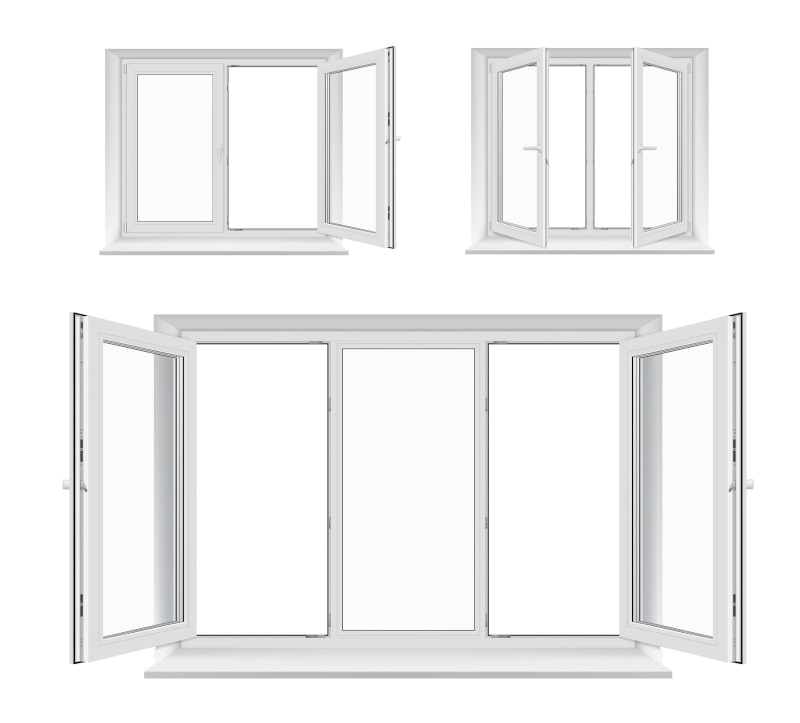
What Are Fibreglass Windows?
Fibreglass Windows are made from glass fibres embedded in resin , often with recycled glass content. They are prized for strength, rigidity, and superior thermal stability.
Advantages of Fibreglass Windows
- Exceptional durability: Resistant to warping, swelling, or cracking.
- Superior insulation: Very low thermal expansion ensures tight seals.
- Eco-friendly: The product features a long lifespan and recyclable content, reducing its environmental footprint.
- High resale value: Seen as a premium product in real estate listings.
- Customizable: Can be painted or textured to mimic wood.
Disadvantages of Fibreglass Windows
- Higher cost: Typically 20–30% more expensive than vinyl.
- Complex installation: Heavier and requires skilled installers.
- Availability: Often custom-ordered with longer lead times.
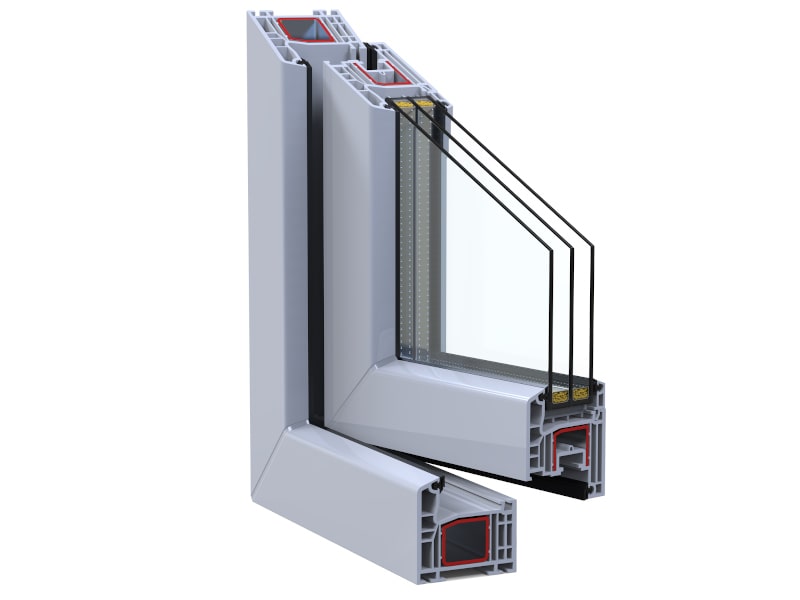
Energy Efficiency in Local Climates
In Canada’s wide-ranging climate, insulation performance is crucial. Both materials can be ENERGY STAR® certified, but fibreglass has an edge.
| Metric | Fibreglass | Vinyl |
|---|---|---|
| U-Factor (insulation) | 0.17–0.25 | 0.25–0.30 |
| Thermal Expansion | Very low (stable in heat/cold) | High (expands/contracts) |
| Air Seal Durability | Excellent over the decades | May loosen over time |
Tip: Opt for triple-pane, low-E, argon-filled glass with warm-edge spacers to enhance efficiency, regardless of the frame type.
Durability and Maintenance Comparison
| Aspect | Fibreglass | Vinyl |
|---|---|---|
| Lifespan | 50+ years | 20–30 years |
| Maintenance | Occasional painting if desired | Wipe clean only |
| Weather Resistance | Immune to warping, rot, and rust | May warp in heat or crack in cold |
| Pest Resistance | Fully resistant | Fully resistant |
Fibreglass’s rigidity means fewer seal failures, while vinyl’s flexibility can lead to minor air leaks over time.
Appearance and Design Options
- Fibreglass: Slimmer frames allow more glass and natural light. Paintable for custom colours or wood-grain finishes.
- Vinyl: Bulkier frames, limited to factory colours (cannot be repainted), with visible weld lines.
Design tip: In modern homes, thin fibreglass frames create a minimalist look, while vinyl suits traditional aesthetics with chunkier profiles.
Installation and Cost Considerations
Proper installation is crucial for performance and warranty validity.
Installation Differences
- Fibreglass: Heavier, rigid frames require precise handling and skilled installers.
- Vinyl: Lightweight and flexible, easier for quick or DIY installation.
Cost Comparison
| Item | Fibreglass | Vinyl |
|---|---|---|
| Window Unit | $800–$1,200+ | $500–$900 |
| Installation Labour | Higher (specialized) | Lower (standard) |
| Total Typical Project | $15,000–$25,000+ (whole home) | $10,000–$18,000 |
Although fibreglass costs more upfront, it can offer a higher ROI through energy savings and increased resale value.
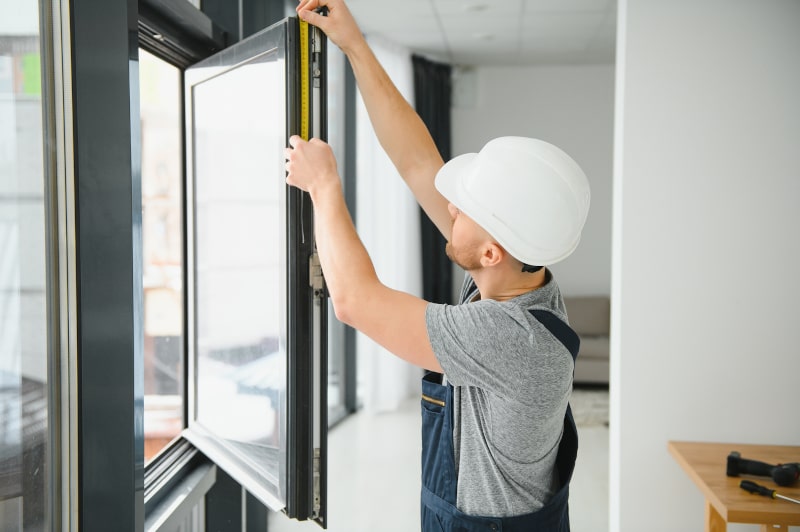
Environmental Impact
- Fibreglass: Often includes recycled glass, has a lifespan of 50 years or more, and is recyclable at the end of its life.
- Vinyl: Requires petroleum-based PVC production, which can emit toxins; shorter lifespan means more frequent replacement.
If sustainability is a priority, fibreglass is generally the greener choice.
Professional Installation Matters
Regardless of the material you choose, professional installation is critical for performance, efficiency, and warranty coverage. Poorly installed windows can develop drafts, condensation, and seal failure.
Canadian Choice Windows & Doors offers factory-trained installers who ensure airtight installation and CSA compliance for both vinyl and fibreglass window systems.
Summary
Vinyl windows are cost-effective, low-maintenance, and straightforward to install — making them ideal for cost-conscious homeowners.
Fibreglass Windows cost more but deliver unmatched strength, insulation, and longevity — an investment in performance and resale value.
For most Canadian homes, vinyl offers an excellent balance of affordability, availability, and efficiency. At the same time, fibreglass is the right choice when long-term durability and premium performance are the most important considerations.
FAQs
Which lasts longer, vinyl or fibreglass windows?
Fibreglass windows can last 50+ years; vinyl typically lasts 20–30 years.
Are vinyl windows energy-efficient enough for Canadian winters?
Yes, especially when paired with triple-pane, low-E glass, although fibreglass performs better in icy conditions.
Can fibreglass windows be painted?
Yes. Fibreglass can be painted any colour, unlike vinyl, which is limited to factory finishes.
Are vinyl windows environmentally friendly?
They are recyclable, but the manufacturing of PVC can release harmful chemicals. Fibreglass is generally more eco-friendly.
Which offers better resale value?
Fibreglass windows often increase a home's resale value more than vinyl windows due to their premium appearance and performance.
1000’s of Colours & Textured Finishes
Transform your home from ordinary to extraordinary with our new coloured and non-glare textured finishes. Available in a wide array of colours as well as custom matched colours for your very own personalized design.
Our Most Popular Replacement Window Colours:






